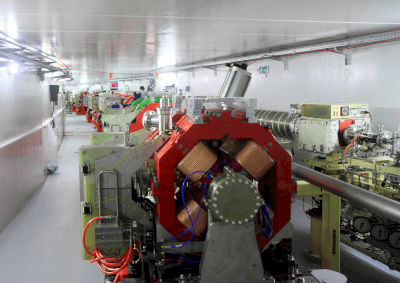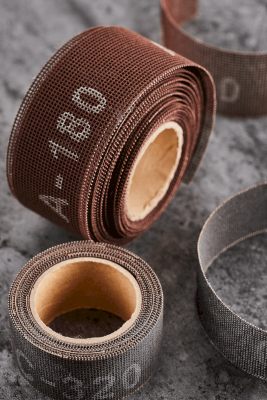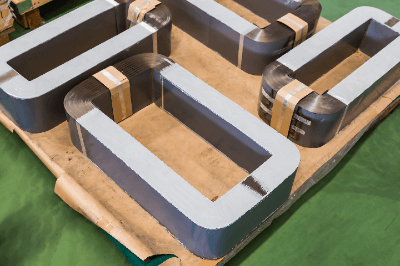Qu’est-ce qu’un actionneur ?
Un actionneur est un dispositif d’entraînement qui convertit divers types d’énergie d’entrée en mouvement physique.
Outre l’électricité, l’énergie d’entrée d’un actionneur peut être pneumatique, hydraulique, électromagnétique, magnétique, de vapeur, de chaleur, etc. L’énergie convertie par un actionneur peut être utilisée pour contrôler le mouvement associé au déplacement d’objets.
Utilisations des actionneurs
Les actionneurs sont utilisés dans une grande variété d’utilisations, soit comme dispositifs permettant d’effectuer des mouvements simples tels que l’étirement, la flexion et la rotation, soit pour générer de l’énergie en continu, comme les moteurs et les engins.
En fonction de l’apport d’énergie, les actionneurs sont généralement divisés en trois catégories principales :
- Actionneurs électriques: robots industriels et équipements de transport nécessitant un positionnement de haute précision.
- Actionneurs hydrauliques: machines-outils et engins de construction nécessitant une forte poussée.
- Actionneurs pneumatiques: équipements industriels généraux et de production alimentaire nécessitant une construction propre et simple.
Principe des actionneurs
Les actionneurs peuvent être classés selon les grands principes suivants :
1. Actionneurs électriques
Les actionneurs électriques sont des unités d’entraînement composées de vis à billes, de guides linéaires, de servomoteurs, etc. et sont utilisés pour transporter des équipements de production.
Les actionneurs électriques comprennent les servomoteurs qui utilisent l’électricité comme énergie, les actionneurs électromagnétiques qui utilisent la force magnétique des électro-aimants comme énergie, et les actionneurs piézoélectriques qui utilisent des éléments piézoélectriques qui se déforment lorsqu’une tension est appliquée.
2. Actionneurs hydrauliques
Les actionneurs hydrauliques sont des actionneurs qui utilisent l’énergie des fluides selon le principe de Pascal. Ainsi, même s’ils sont petits, ils peuvent générer de grandes quantités d’énergie et sont utilisés dans des équipements qui nécessitent de grandes quantités d’énergie, tels que les usines et les machines de construction.
3. Actionneurs pneumatiques
Les actionneurs pneumatiques utilisent la pression pneumatique comme source d’énergie, alors que l’hydraulique nécessite des charges importantes, une pression élevée et un équipement lourd. Ils sont donc utilisés comme méthode sûre, avec de faibles charges et peu de risques d’incendie.
Autres informations sur les actionneurs
1. Actionneurs hydrauliques et électriques
Les actionneurs sont principalement utilisés pour l’énergie de propulsion avec une densité de puissance d’environ 1k (W/kg). Le contrôle de l’énergie hydraulique est utilisé pour les utilisations de plus grande puissance et le contrôle de l’énergie électrique étant utilisé pour les applications de plus faible puissance.
Les actionneurs à commande électrique ont également amélioré activement leur puissance ces dernières années grâce à l’innovation technologique. La puissance réelle ne s’est améliorée de manière significative que dans le domaine des moteurs à courant continu sans balais pour les applications d’actionneurs de petite et moyenne taille, Les es servomoteurs à courant alternatif pour les grandes applications n’ont pas connu d’augmentation significative de leur puissance depuis le début des années 2000.
Par conséquent, en particulier dans les domaines des machines-outils et des engins de construction dans les usines nécessitant de grandes densités de puissance de 10k(W/kg), les actionneurs hydrauliques sont le seul domaine de ces applications, et les actionneurs à commande électrique ne sont pas utilisés dans ces domaines. Cependant, il est également vrai que la maîtrise de l’énergie hydraulique est souhaitée dans ce domaine du point de vue des coûts d’exploitation tels que les vidanges d’huile et l’entretien, ainsi que des considérations environnementales, et si possible, de la commande électrique.
2. Actionneurs hybrides à commande hydraulique et électrique
L’une des tendances technologiques récentes est le développement d’actionneurs hybrides à commande hydraulique et électrique. La commande hydraulique est généralement basée sur le principe de Pascal, mais les problèmes qui en découlent sont les suivants : il faut un équipement de tuyauterie pour la circulation de l’huile afin de contrôler le débit de la servovalve de l’huile de travail. Cela rend l’équipement volumineux, et l’huile de travail se détériore en raison de l’augmentation de la température de la chaleur d’échappement de la machine. Cela entraîne des coûts d’entretien élevés pour les changements d’huile périodiques. Cela entraîne également une détérioration de l’huile de travail en raison de l’augmentation de la température de la chaleur d’échappement de la machine, et des coûts de maintenance élevés pour les vidanges périodiques.
Les derniers actionneurs hybrides à commande hydraulique et électrique permettent de contrôler la sortie finale de l’actionneur par la vitesse d’entraînement du servomoteur électrique, plutôt que par le contrôle du débit de la servovalve. Les coûts de maintenance liés aux vidanges d’huile peuvent donc être réduits et le système est également adapté aux considérations environnementales.

 A synchrotron is an accelerator that controls the high-frequency electric field that accelerates the speed of charged particles and the magnetic field that deflects their path so that they can maintain a constant circumference of their rotation.
A synchrotron is an accelerator that controls the high-frequency electric field that accelerates the speed of charged particles and the magnetic field that deflects their path so that they can maintain a constant circumference of their rotation. Alumina Fiber is a fibrous material composed mainly of
Alumina Fiber is a fibrous material composed mainly of 